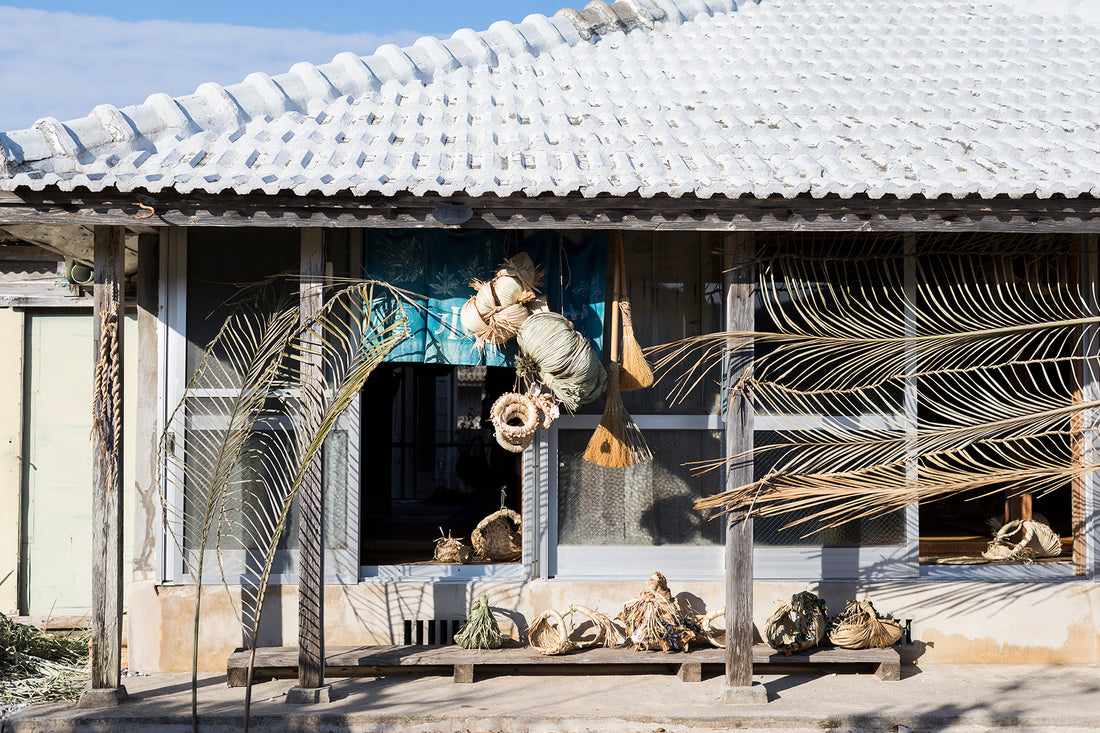
SYUMIDOKA - Inheritance of Okinawan Tradition
Share
Eighty minutes away by ferry from the main island of Okinawa, the craft artist Masami Koreeda has been making traditional Okinawan tools in Iheya island, which is called “a secret place” because of its location. After she quit a career as a fashion stylist in Tokyo, Masami moved to Irabu island in 2011 and started making Okinawan craft, then settled in her ideal base in Iheya in 2016. Since then she has been re-designing traditional tools, such as a basket and bucket, while introducing her aesthetic, for instance, big baskets into which vibrant African fabrics are woven, garlands with shells and a turtle-shaped ornament that is said to be a lucky symbol, all of which make living spaces feel warmer and more organic.


The plants that grown under the powerful sunshine in Okinawa island are filled with energy, and give us many benefits.
Masami’s brand name is 種水土花 Syumidoka. The characters represent SEED, WATER, SOIL, FLOWER in Japanese. The brand concept is to produce things made of materials from nature that will return to nature at the end of their life cycle. Most items are woven from Kuba leaves (of the palm tree family), which means they are made from 100% natural materials and compostable. This tree is known not only as a sacred plant that grows locally in utaki (*1), but as having practical features such as strong fibre and water resistance that mean the Kuba basket has been used as water ladle and for food storage. Masami said that the strength of this plant appealed to her the most.
“Iheya island is one of the limited places where a specific kind of Kuba grows that is very fine and durable. When I moved in, people who knew the craft had already passed away, so no one knew how to make Kuba tools, which was a big shame. Then I started to weave by myself, learning from old examples.”
*1: utaki Sacred places surrounded by wood and rocks. In Okinawan Shinto, people used to pray for gods and have rituals there.

Kuba, shell ginger (a type of plant), Japanese silver grass; all material comes from the neighbouring mountains, and local seashells are decorative but also add weight to make the basket stable. Although there are a plenty of resources, Masami always tries not to waste those.
“Even a tiny piece of plant is used for some part of each item, or accessories, which is my new project, so that I can make the most of everything that nature gives me.”
Having never taken it for granted, she appreciates natural resources. After cropping, the plant is dried in the sun and soaked in water before weaving so that make it easy to handle. After finishing weaving, she lets them dry again to prevent mould, then adds more sections to finish the structure. Waiting time is a part of the creation, so it takes one to two months to complete the whole production process.

One hundred years ago, people made all necessities by hand. For instance, these hollow glass globes would be attached to fishing nets to help them float. They were created with blown glass and hand-woven plant string, however, nowadays those handmade floats have been replaced by plastic. They had been an essential tool in the past but fell out of use, but Masami brought them back to life, as a piece with an earthy feeling.

Okinawan people are mostly religious and respect the gods of nature with appreciation and awe. (For most Japanese, “gods” means the greatness of nature with its prodigious power that people cannot control.) In Iheya, they believe in old legends and have many rituals throughout the year. A garland made of Kuba is inspired by old amulets, to which Masami attaches shells to create her own art.

Local culture and customs are a source of inspiration for Masami, bringing traditions to life in a contemporary way. Her handmade creations, made from natural materials, embody a sense of individuality, warmth and local history that cannot be found in mass production.